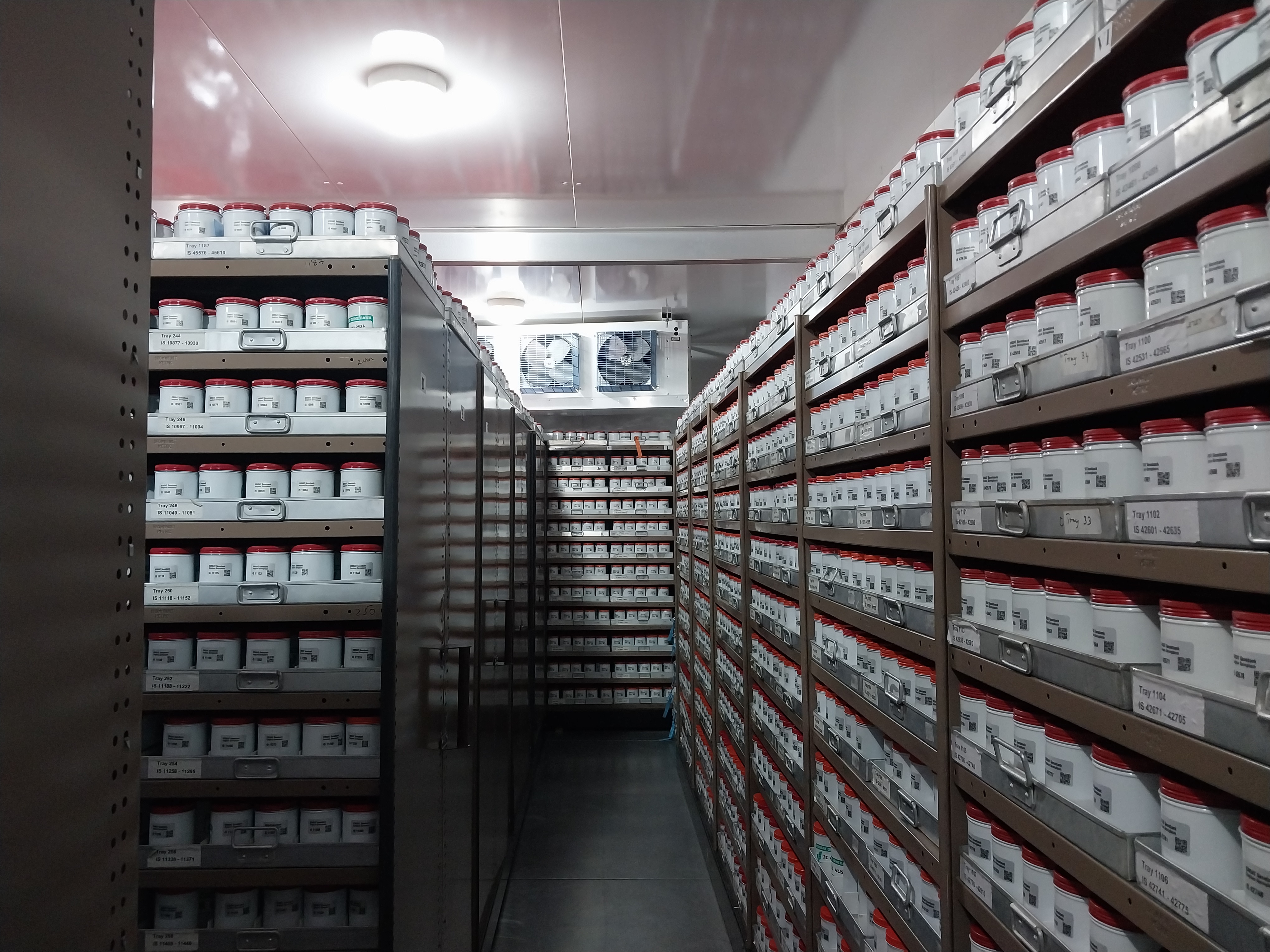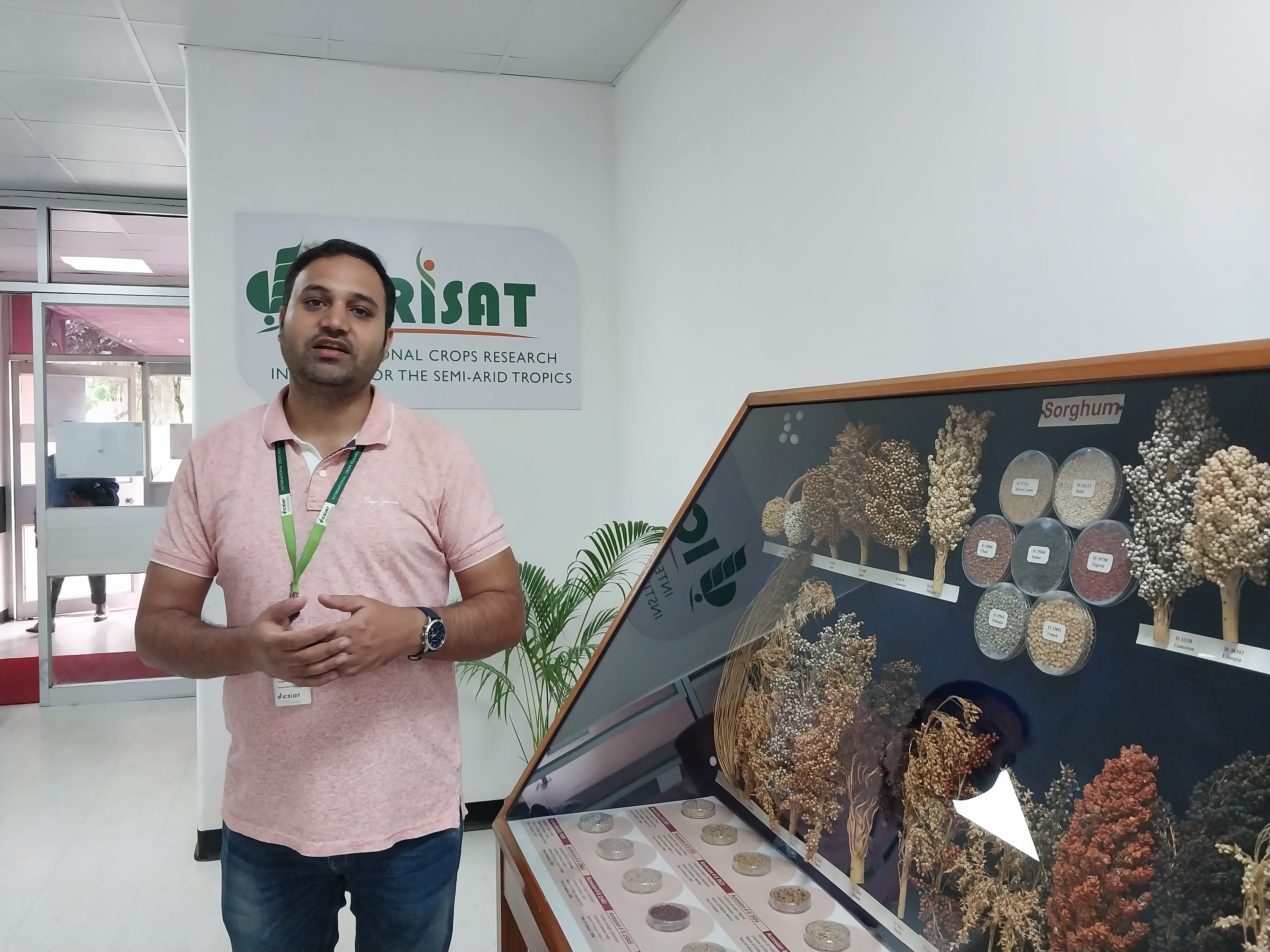
ICRISAT, established in 1972, has the Rajendra S Paroda gene bank which preserves the seeds of 11 crops collected from across the world. This is essential for food security, writes Deepanwita Gita Niyogi
The International Crops Research Institute for the Semi-Arid Tropics based in Hyderabad is a global organization which conducts agricultural research in Asia and sub-Saharan Africa. Popularly known as ICRISAT, it was established in 1972. It has the Rajendra S Paroda Genebank or seed bank which preserves the seeds of 11 crops collected from across the world.
Seed preservation promotes biodiversity in the face of threat due to a changing climate. In the case of sorghum, the gene bank has 42,799 accessions or varieties collected from 92 countries. The sorghum panicles kept in wooden boxes with glass covers showcase amazing diversity. These have been collected mainly from African countries.
At ICRISAT, the seeds which have been conserved are high yielding and resistant to pests and diseases. Even farmers can take these if they want. The gene bank is over 40 years old. If needed, seeds can be conserved for 100 years too.
“We conserve the seeds of many crops in advance at the gene bank. This is essential for nutritional as well as food security,” said Ovais Peerzada, seed laboratory manager at the ICRISAT genebank.
Among the seeds of 11 crops conserved are sorghum, pearl millet, chickpea, pigeonpea, groundnut, finger millet, foxtail millet, little millet, kodo millet, proso millet and barnyard millet. Recently, ICRISAT carried out safety duplication of its seeds by sending some of the materials to another gene bank in the United States.
“When farmers get new seed varieties in the market, they may forget traditional ones available earlier. So, the genebank stores seeds as a precaution so that these do not disappear with time,” Peerzada added. Farmers also store seeds at the community level in villages but it is not scientifically carried out. Seed varieties also make crop reintroductions possible in future when some varieties may outperform others.
Arhar, the source of protein
Among pulses, the genebank has arhar or pigeon pea collection with 13,787 varieties collected from across the world showcasing a wide range in the shapes and sizes of pods. In chickpeas, which was introduced in India from outside, there are over 20,000 accessions. In groundnut, which is also a leguminous crop, there are more than 15,896 varieties. Leguminous crops provide nitrogen to the soil. The groundnut collection is mostly from South American countries like Bolivia and Peru.
Talking about the preservation of so many varieties or accessions, Muzamil Baig, quality manager at the gene bank, explained that multiple varieties ensure there is minimal chance of seeds disappearing over time.
“We know the origin of each variety and store details. There are two rooms at the gene bank where seeds are stored for medium term as well as long term at very low temperatures,” said Baig. In fact, one of the rooms has sub-zero temperature.
The seeds are preserved in plastic containers. While the medium-term seed storage is meant for preserving seeds for 20-22 years, the long-term is meant for more than 50 years. Temperatures and humidity have to be controlled for seed preservation. Distribution, regeneration and multiplication happen only through medium-term seeds. The seeds are dried and then preserved to slow down ageing. Long-term seeds should not be disturbed, the experts pointed out.
In seed conservation, low temperature and humidity have to be carefully maintained. The room containing the medium-term seeds is now full as the collection is being enriched continuously. The viability of seeds is monitored after every 20 years. The gene bank has seeds as old as those dating back to 1974.
Conserving millet seeds
Millets are ancient grains. According to Peerzada, the dialogue around millets in view of the International Year of Millets 2023 mostly centre around ragi or finger millet but the focus should be on minor millets as well. In the ICRISAT gene bank, 24,663 varieties of bajra or pearl millets are there and 7,519 ragi ones. Millets are rich in calcium and iron.

The millet panicles have an amazing range. Among bajra or pearl millet panicles, the longest one is from Niger and the smallest is from Chad. Another millet panicle has spine-like structures to keep birds away. “It is a natural adaptation to prevent birds from feeding,” said Senthil Ramachandran, manager of germplasm conservation.
Apart from ICRISAT, the Indian government has the national gene bank which has more than 4.5 lakh accessions or varieties. At the global level, seeds are also conserved at the Svalbard Global Seed Vault in Norway. Started in 2008, it is underground and many nations preserve their seeds there.
According to Peerzada, it is important to look at centres of origin or where the crops originated first when it comes to preservation of seeds. “Many crops came to India as a result of trading like the chickpea which travelled to the country from the Mediterranean via Afghanistan. There is a need to know what is unique about each variety. Breeders choose a few varieties and then develop new ones.”
It is also necessary to evaluate the varieties to know if they are prone to diseases. If farmers are interested in getting seeds, they can view the seed database, make selection and then send a request to ICRISAT. Over five grams of a particular seed is handed over when asked for.












